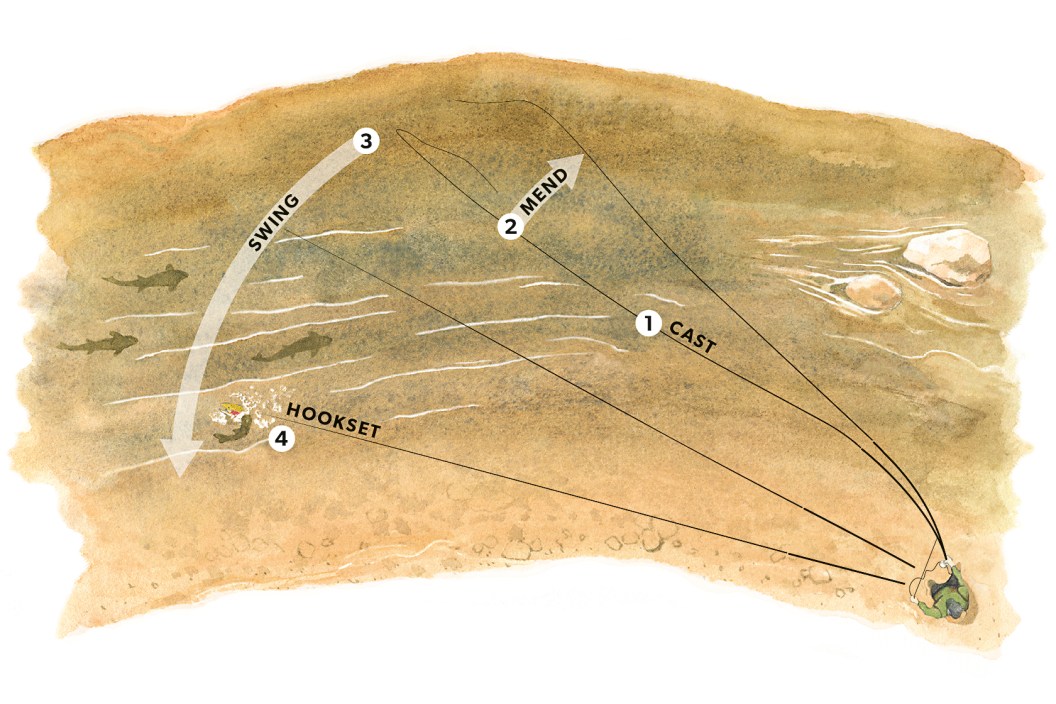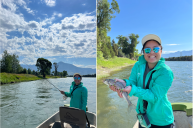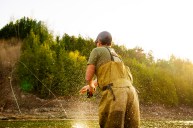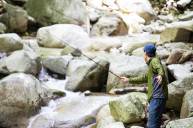Swinging a wet fly is one of the oldest methods for catching trout with a fly rod. Despite advances in fly fishing tools, the technique hasn't changed much since it dominated the chalk streams of 19th century England. It's still a great way to catch fish for both beginner fly fishermen and experts today.
In practice, swinging a wet fly is a technique that presents a fly just below the surface of the water—usually a few inches to about one foot—to imitate the moment when aquatic insects, previously living on the riverbed, rise to the surface to hatch into winged adults. This moment in an insect's life is a vulnerable one of which trout regularly take full advantage.
Perhaps the best part about wet fly fishing is how simple (and surprisingly effective) it is. Once you get comfortable with it, you'll find that whole sections of rivers you thought you knew will open up. If you can find the right location to deploy swinging a wet fly, you'll catch more fish and add a vital tool—somewhere between surface dry fly fishing and other types of subsurface nymphing techniques—to your riverside options.
Plus, nothing quite compares to the feeling of a take on the swing, and once you've felt it, you'll begin asking yourself why you hadn't given it a shot sooner. Here's how to get out on the river and swing a wet fly to catch hungry trout.
What Gear You'll Need to Fish a Wet Fly
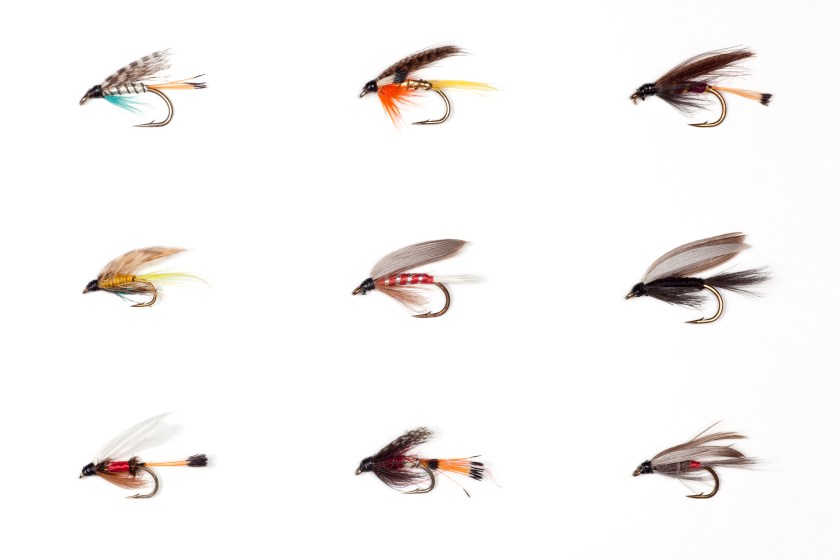
Getty Images, cjp
Fishing a wet fly is uncomplicated and doesn't require any special equipment or tackle. Any fly rod outfit suitable for casting a dry fly will do just fine, as long as you're using floating line and some form of tapered leader of nine or more feet.
The only thing you'll need that's outside the norm are the wet flies themselves.
These days, traditional wet flies—which are tied to look like juicy, swimming bugs—might be tucked away at your local fly shop since most anglers are fishing with dry flies, nymphs (flies that imitate bugs living underwater), or a combination of both in a "dry-dropper" setup. Still, any outfitter worth their salt will have some form of wet fly patterns.
A wet fly falls somewhere between dry fly and nymph in its overall appearance, but is typically marked by sleek, rear swept wing canted acutely off the hook shank, usually in a white, lead gray, or natural duck feather. But like other flies, wet flies can come in a wide array of costumes. Bright reds and yellows can serve as "attractors" that get a fish's attention, while subtler tones more closely mimic the local bug life.
There is an infinite variety of wet fly patterns, and as you learn how to swing a wet fly, you'll find favorites that match whatever is on the menu at your local trout stream.
Some of our favorite wet flies are the Dark Hendrickson, March Brown, and Royal Coachman patterns.
How to Rig a Wet Fly
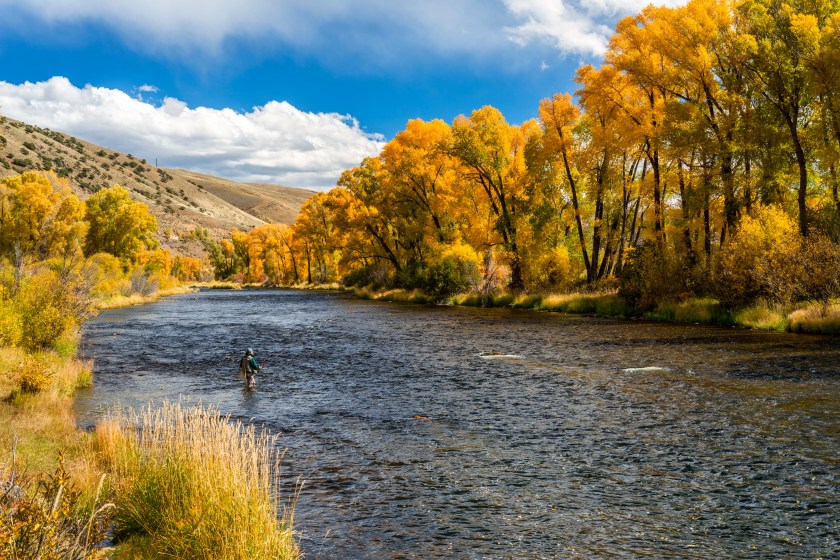
Getty Images, skibreck
Tie a single wet fly to the terminus of your tippet (a standard clinch knot will suffice). For rivers with swift current and fish over 10 inches, use a stout 4x tippet. If your water has bruisers, beef up to 3x.
A wet fly is designed to ride just in the surface film down to a few inches under the water. With this in mind, fluorocarbon can be helpful for its sinking capabilities, but an inch or two of depth won't make or break your catch if the trout are hungry.
How to Swing a Wet Fly
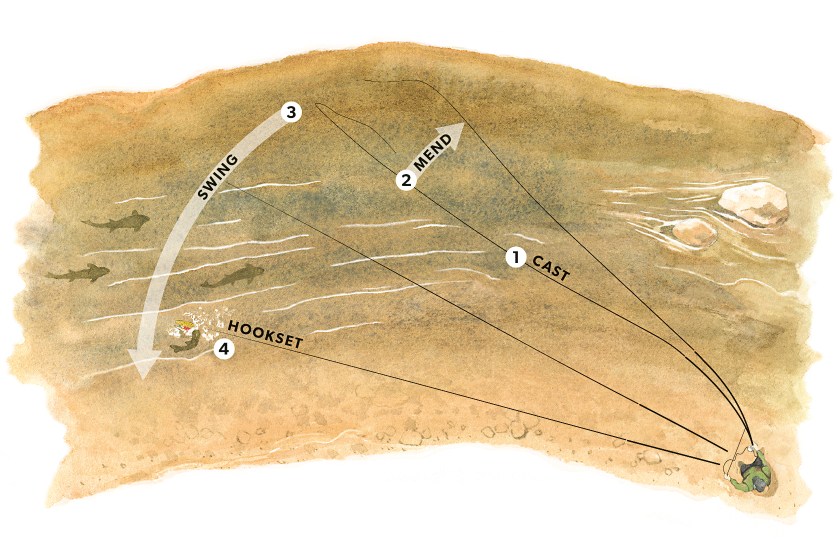
Oliver Uberti for Wide Open Spaces
Before you try the technique, find the right water. One compelling aspect of wet fly fishing is that it's ideal for stretches of water where other flies are difficult to fish: swift riffles and broken water two to four feet deep. A good place to try the technique is a riffle that tumbles into a pool or has some other gradient of depth. Better yet, fish a swung wet fly from the slack side of a bend in the river where the water runs fastest on the outside edge. Trout tend to frequent these transitions and will typically snatch anything that resembles food as it cruises by.
1. Cast downstream a little less than 45 degrees between the bank and the main current.
While techniques and tactics vary, the most common way to fish a wet fly is to cast down and across the current—that is, not straight across the current, but slightly downstream.
2. Remove any slack, or belly, of line, and follow your fly with your rod tip it drifts.
Once your cast lands, mend your line to remove any slack that has formed. Keep your rod low and track your fly with the tip. When done successfully, your fly line should make a generally straight line between your fly and the tip of your rod.
3. Drift through the run, and swing.
While pointing your rod tip at it, let your fly drift through the run. At the end of the drift, keep your rod tip low and the fly will gently "swing" across the current until it is directly downstream of you. This swinging motion is where wet fly fishing shines; as your line tensions, the wet fly will rise in the water column, mimicking an emerging insect.
Good line management is useful here. Try not to have excess line off the reel when you make your cast. Instead, have only a loop of line about 8 to 12 inches long hanging from your reel. As your flies drift, hold the line between the fingers of your non-casting hand. With your rod tip low and pointed at your flies, you'll feel even the smallest take. When you raise your rod to set the hook, the loop of slack will disappear and you'll be on-reel immediately.
4. Hookset.
A swung wet fly can elicit powerful eats. If your fly is riding high in the water column you might see the fish breach or expose a fin or tail when it takes. But most of the time, you feel it.
In fast water, a wet fly take can be exhilaratingly strong, especially if the fish is large or turns on the fly. Where the current is softer, a take may present as a light tapping or tugging on the end of your line.
In either case, it's important to not make a standard hook set. Doing so will almost always pull the fly out of the mouth of the fish or break it off. Instead of setting like you would on a dry fly or downed bobber, slowly raise the tip of your rod. This will engage the hook point in the mouth of the fish without removing it. The fish will do the rest.
READ MORE: A Beginner's Guide to Fly Fishing Terms
